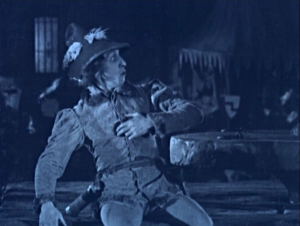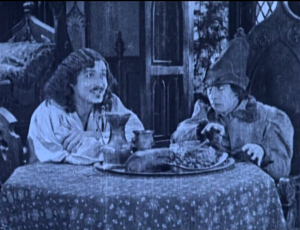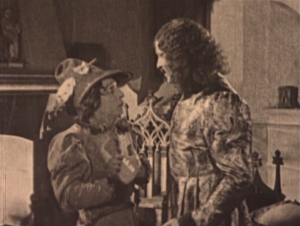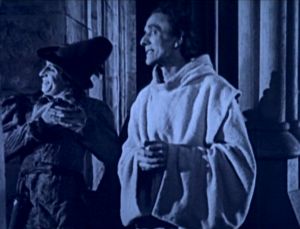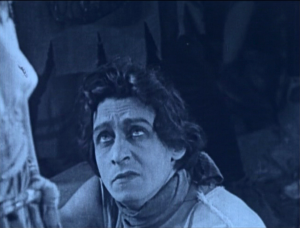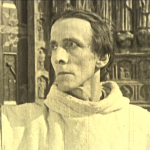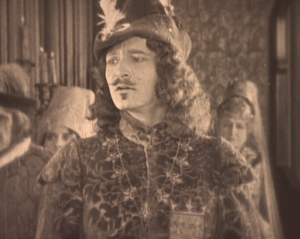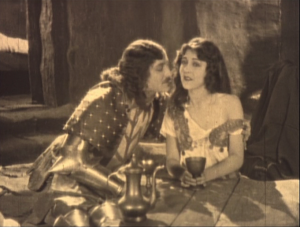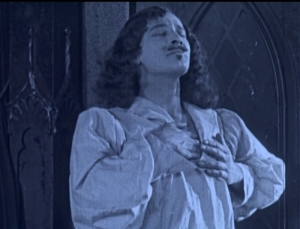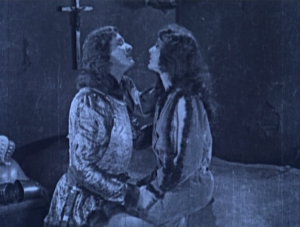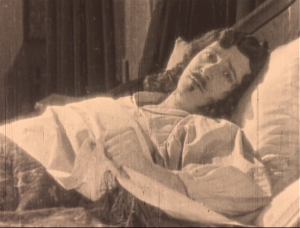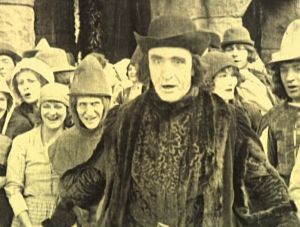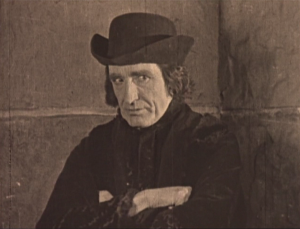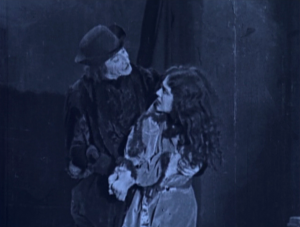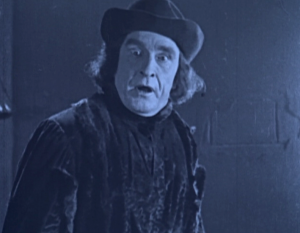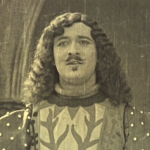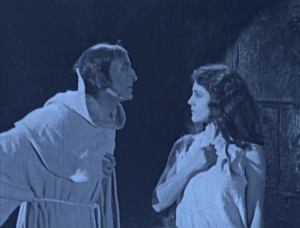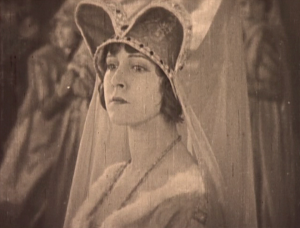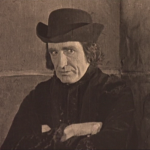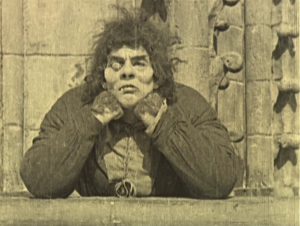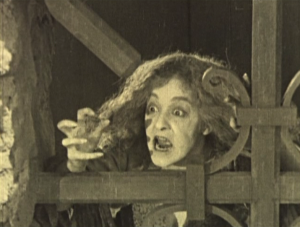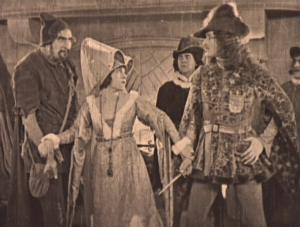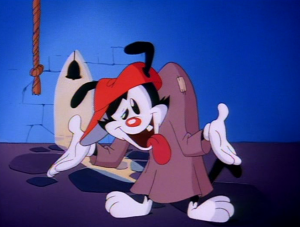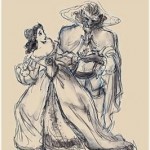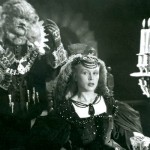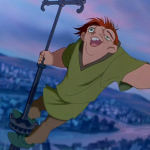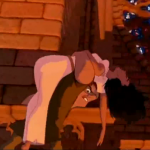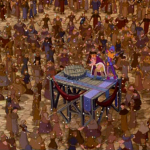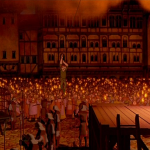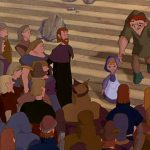As Esmeralda been adapted for different versions of The Hunchback of Notre Dame, she has wore red a lot.
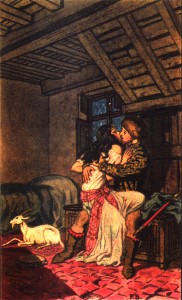
Esmeralda & Phoebus Illustartion
The first couple adaptations La Esmeralda (the opera and the Ballet) her costumes has red details.
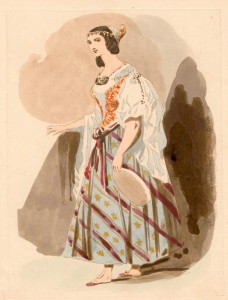
Costume design for La Esmeralda Opera 1831
In 1839, Belgium Painter, Antoine Wiertz depicted her in all red.

Painting of Esmeralda and Djali by Wiertz
In 1870 ballerina, Adelina Patti, is depicted in a costume with a red skirt. The Ballets runs the gambit of colors from blue to green to pink though red seems to be the popular color choice.
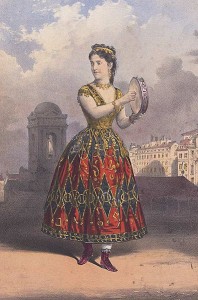
Adelina Patti as Esmeralda 1870
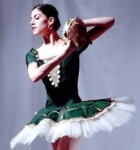
Paloma Herrera as La Esmeralda Ballet
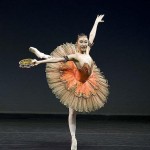
La Esmeralda Ballet
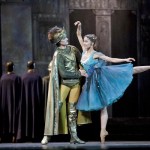
La Esmeralda Ballet with Phoebus
It’s not till we get to the movies that we see red surfacing as the dominate color for her. The 1923 movie has at least two instances of a colorized posters one is yellow and purple and the other has red details.
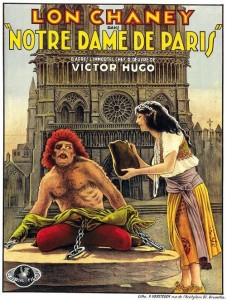
Hunchback of Notre Dame 1923 Lon Chaney
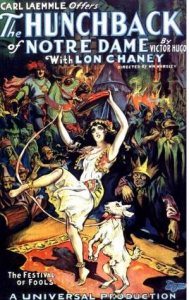
Hunchback of Notre Dame 1923 Poster
In 1939 despite Walter Plunkett’s design being mostly blue with red details and a red vest the coloration of her dress on a poster is all red.
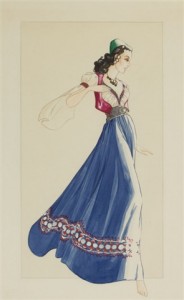
Plunkett’s costume design for Esmeralda 1939 Hunchback of Notre Dame
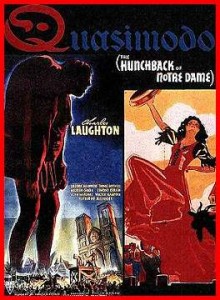
Movie poster for 1939 Hunchback of Notre Dame
Though to be fair there are a few posters where she wears green and blue, but there is more red.
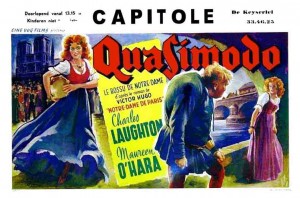
Hunchback of Notre Dame 1939 Poster
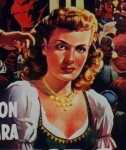
Movie poster for 1939 Hunchback of Notre Dame
In the 1956 version Esmeralda wears all red for most of the movie.
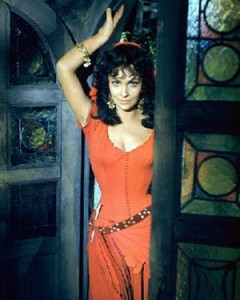
Gina Lollobrigida as Esmeralda Hunchback of Notre Dame 1956
But I find it curious that she wears yellow at her ill-fated meeting with Phoebus over red.
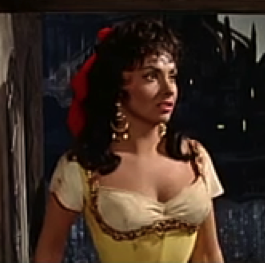
Gina Lollobrigida as Esmeralda Hunchback of Notre Dame 1956
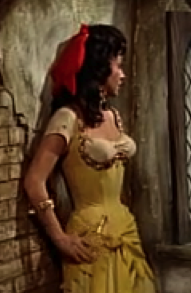
Gina Lollobrigida as Esmeralda Hunchback of Notre Dame 1956
In 1996 Disney version Esmeralda wears red during her dance performance but for most part she wears purple. I do have to wonder if Anne-Marie Bardwell had something to do with Esmeralda wearing purple throughout the movie as she was credited in Character Design/ Visual Development and one of the animators on Esmeralda.
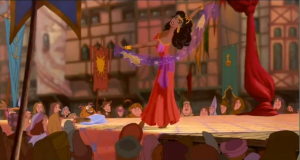
Esmeralda Disney Hunchback of Notre Dame Dancing
Though she wears red/dark pink in Der Glockner von Notre Dame the German musical.
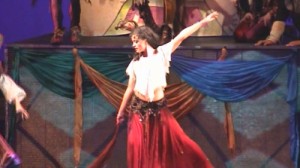
Esmeralda Dancing Der Glöckner von Notre Dame
In Notre Dame de Paris Esmeralda wears green but there is one red dress that was wore for advertising for the London cast and the 2001 French cast. This dress is only wore once on stage in the Russian version during her meeting with Phoebus. And even in the 2010/2011 concerts Helene Segara wore red to sing the musical.
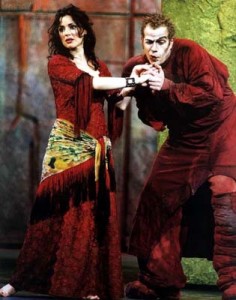
Tina Arena As Esmeralda in the Promotional Red Dress Notre Dame de Paris 2000 London Cast
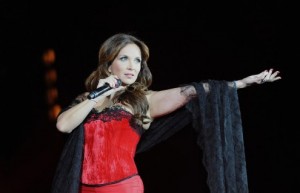
Helene Segara performing Bohemienne at Bercy Concert
Recently in the new illustration novel by Benjamin Lacombe and the Graphic Novel by Robin Recht and Jean Bastide, Esmeralda wears red.
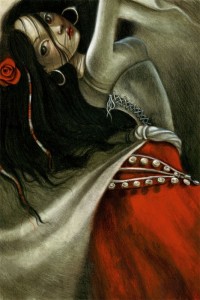
Esmeralda by Benjamin Lacombe Notre Dame de Paris
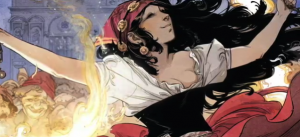
Esmeralda Notre Dame de Paris Graphic Novel by Robin Recht and Jean Bastide
When you look at all these instances, why is red her default color? Is it because green is too obvious for her given that her name means Emerald and red is opposite color to green making it the non-obvious choice? Seems a rather simplistic design notion for a costume, especially when one thinks that the color red is in total opposition to her as character.
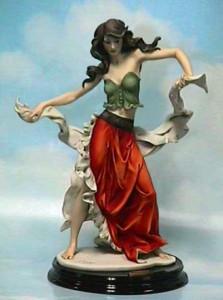
Esmeralda Statuette by Armani
The color red typically is associated in Western cultural with passion, desire, love and sexuality. Esmeralda’s personality is lighthearted, innocent, naive and modest. She doesn’t seem the type character to outwardly express her sexuality because even though she inspires desire in others, she herself is unaware of it.
Red is also in opposition of Esmeralda’s allegorical role as the Virgin Mary who traditionally wears either wears blue or turquoise.
Red also seems to age Esmeralda, her main point of interest in the novel is her youth, blue and green are more youthful colors but red comes off as mature.
Finally in the Romani culture, red is a color of ill omen as it’s associated with Blood (The Lure of the Gypsy Culture ) Though maybe the costume is meant her to be ironic like she is subconsciously giving her in to tragic fate, though she lives more often than she dies and I don’t think the costume designers are that clever or that cerebral.
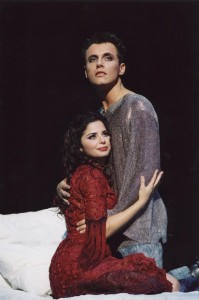
Shirel as Esmeralda in the Red with Laurent Ban as Phoesbus Notre Dame de Paris 2001 French Cast
However, maybe this whole matter is quite simple, does Esmeralda wear red in the book?
In the book there are only a few instances where her clothing is described. When Gringoire first sees her, she is wearing a golden bodice (Book 2 chapter 3 Kisses for Blows) Frollo mentions that she wears blue when he first saw her dance (Book 8 chapter 4 Lasciate Ogni Speranza) and of course she wears white in the later part of the story when she condemn to die and brought into Notre Dame.
I think there maybe an instance of her wearing a multicolored skirt but I can’t find the instance in the book and her necklace that contains her baby shoe is stung with red seed beads, other that she does not wear red. So why is she in red since red is in total opposition to her as character and there is no precedence for it in the novel.
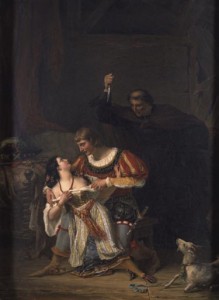
Auguste Couder’s Painting of Frollo stabbing Phoebus
If Esmeralda doesn’t wear in the book and it’s a color that is against every aspect of her character why does red seem to be the color of choice for her.
One reason I think is red is an easy color choice to make for when a character is suppose to stand out and be thought as desirable. There might be another level, Esmeralda is a Gypsy, this gives her an sense of exoticism and one popular style of art in the 19th century was Orientalism. Orientalism in art meant depicted exotic sense from place that were exotic to Europeans. The paintings use a lot of rich colors and a lot of red especially for women.
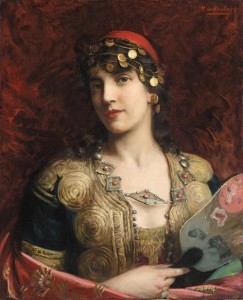
Une Beaute Prientale by Paul de la Boulaye
So her being in red could mean that the costume designers are saying Esmeralda is an exotic beauty who is sexual desirable even though Victor Hugo meant for Esmeralda to work against the stereotype, why else would he have Gringoire said this to Frollo about her;
“I certainly consider it a great rarity to find such nun-like prudery fiercely maintained in the midst of those gipsy girls, who are so easily tamed” (Book 7, chapter 2). Esmeralda’s purity is part of her allure and to have her wearing red more less bastardizes the point of her character
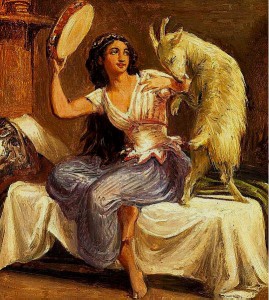
Painting of Esmeralda and Djali by Wilhelm Marstrand
Red is just the wrong color for Esmeralda as a character and is it far too over done to be her dominant color anymore, details are fine but it’s too much red but in over 170 years worth of adaptations it has become a boring cliche. I think this is a cliche that need to at very least ebb. Costume designers of newer Hunchback adaptions if you read this please consider using different colors and if you must use red make it details or at the very least try a different tone it doesn’t always have to fire engine red.
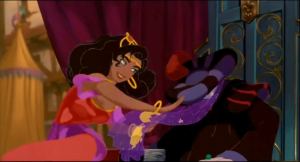
Esmeralda mocks Frollo Disney Hunchback of Notre Dame

